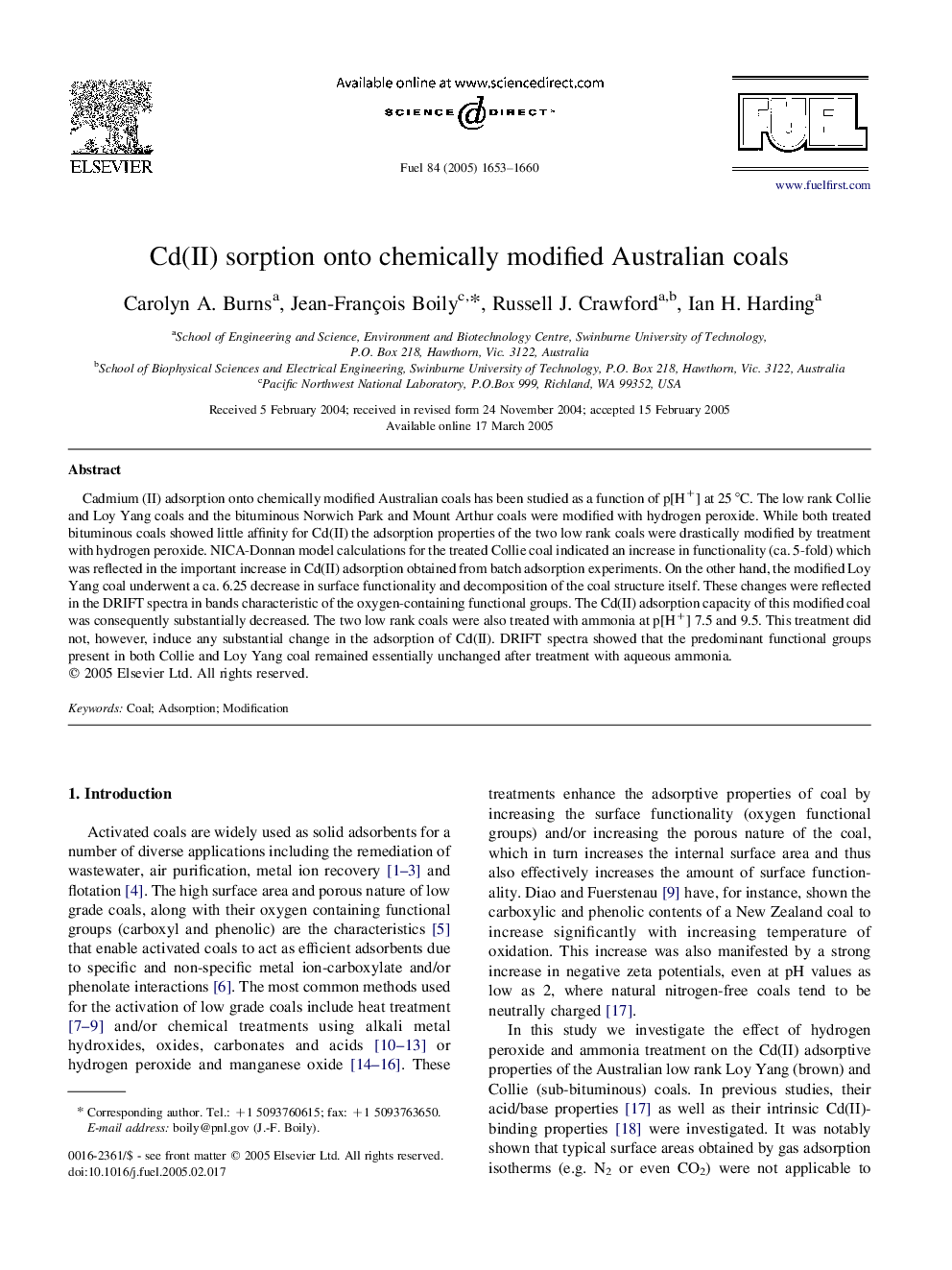| Article ID | Journal | Published Year | Pages | File Type |
|---|---|---|---|---|
| 9629131 | Fuel | 2005 | 8 Pages |
Abstract
Cadmium (II) adsorption onto chemically modified Australian coals has been studied as a function of p[H+] at 25 °C. The low rank Collie and Loy Yang coals and the bituminous Norwich Park and Mount Arthur coals were modified with hydrogen peroxide. While both treated bituminous coals showed little affinity for Cd(II) the adsorption properties of the two low rank coals were drastically modified by treatment with hydrogen peroxide. NICA-Donnan model calculations for the treated Collie coal indicated an increase in functionality (ca. 5-fold) which was reflected in the important increase in Cd(II) adsorption obtained from batch adsorption experiments. On the other hand, the modified Loy Yang coal underwent a ca. 6.25 decrease in surface functionality and decomposition of the coal structure itself. These changes were reflected in the DRIFT spectra in bands characteristic of the oxygen-containing functional groups. The Cd(II) adsorption capacity of this modified coal was consequently substantially decreased. The two low rank coals were also treated with ammonia at p[H+] 7.5 and 9.5. This treatment did not, however, induce any substantial change in the adsorption of Cd(II). DRIFT spectra showed that the predominant functional groups present in both Collie and Loy Yang coal remained essentially unchanged after treatment with aqueous ammonia.
Keywords
Related Topics
Physical Sciences and Engineering
Chemical Engineering
Chemical Engineering (General)
Authors
Carolyn A. Burns, Jean-François Boily, Russell J. Crawford, Ian H. Harding,
